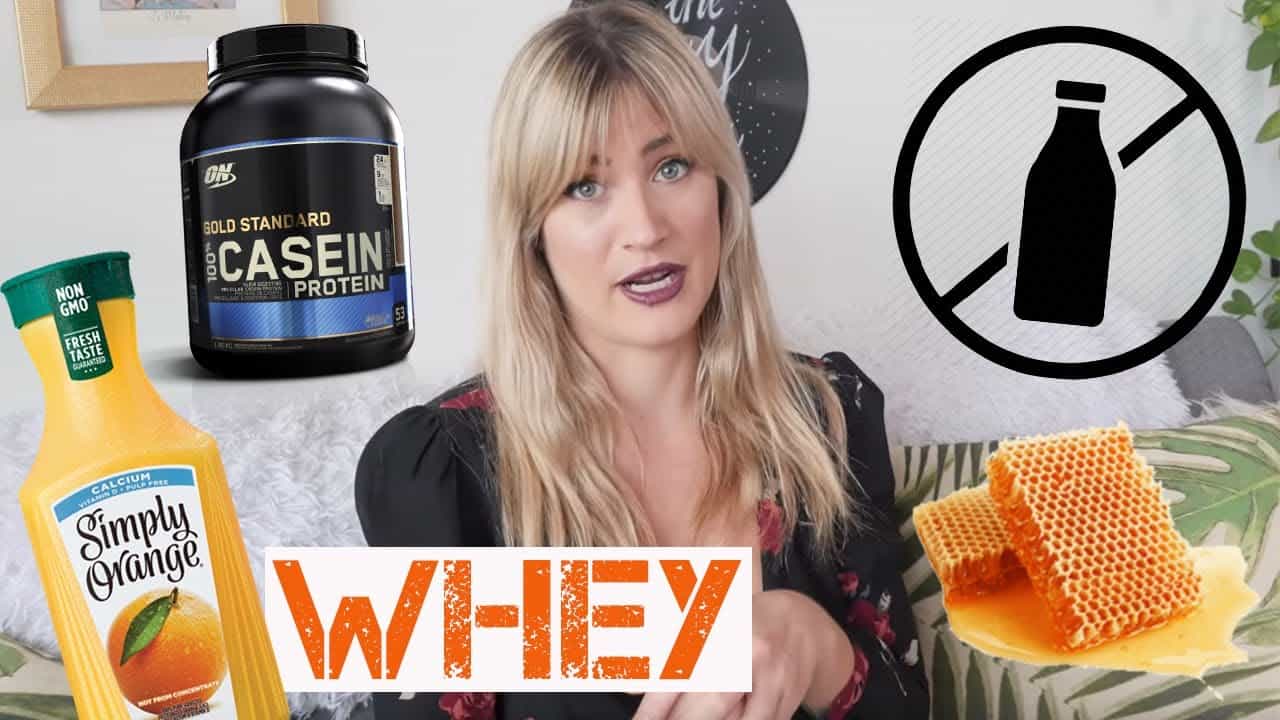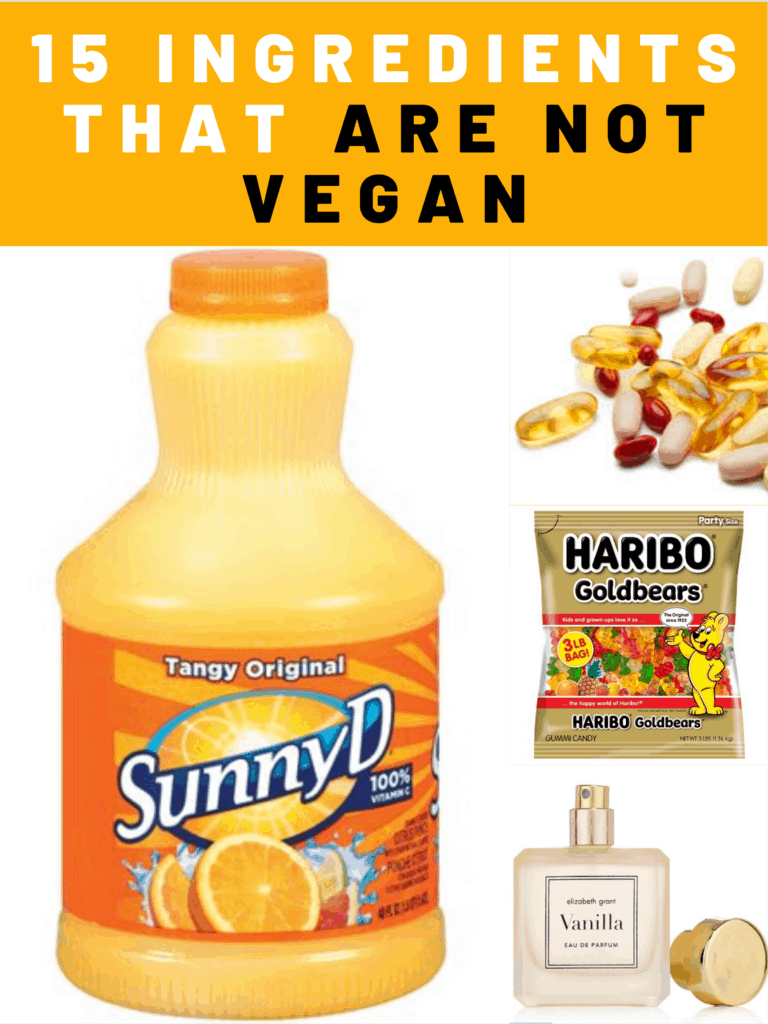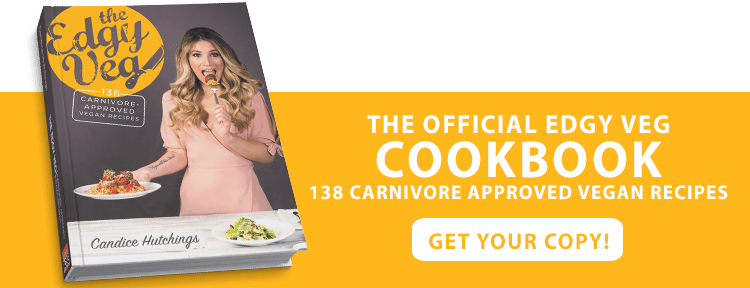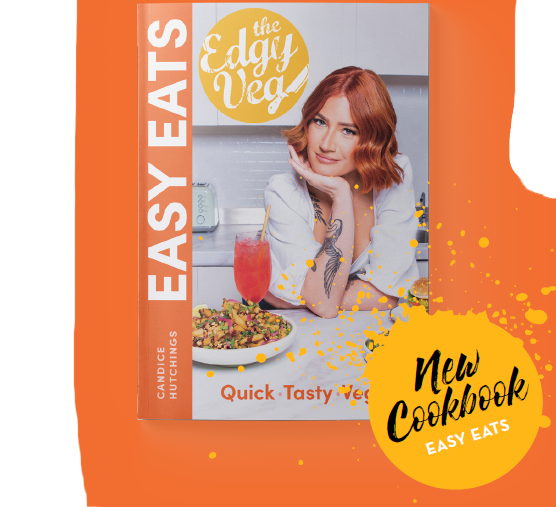
15 Ingredients That Are NOT Vegan | Non-Vegan Ingredients To Avoid

I try not to beat myself up when I accidentally eat something non-vegan, because why put that massive stress on yourself; it’s just not healthy. I try my absolute best every day to avoid non-vegan ingredients but sometimes things happen. Sometimes, you consume non-vegan ingredients that are out of your control.
As the years have passed, I’ve made fewer and fewer slip-ups. And I wanted to take my knowledge and share with you 15 sneaky non-vegan ingredients to avoid on a vegan diet. If you’ve consumed some of these ingredients by accident, I want you to know it’s okay, and not to put yourself down. Now you know about these ingredients and knowledge is power.
Instead of reading, you can watch me chat about these Sneaky Non-Vegan Ingredients here!
List of Ingredients That Are NOT Vegan
Castoreum
Castoreum is an anal secretion beavers use to mark their territories. What does this have to do with food? Well, it happens to smell like vanilla. Back in the day, it was sometimes used as food flavoring for vanilla (like in ice cream) and used to enhance raspberry or strawberry flavorings, as well as a perfume ingredient. The use of castoreum in common food products today is exceedingly rare, in large part because collecting the substance is difficult (and therefore expensive). However, If a vanilla extract or similar product says ‘artificial flavoring’, it could be anal secretion from beaver butts so try to opt for natural flavoring.
Casein
Casein is the chief protein in milk. It is found in the ingredient list of cream-based soups, sherbet, ice cream, margarine, puddings, also many products that are labeled “dairy-free” so be careful and always look at the ingredient list for this sneaky non-vegan ingredient.
Whey
Whey is the liquid remaining after milk has been curdled and strained. It is a byproduct of the manufacture of cheese or casein. Whey is such a common and inexpensive food additive and is commonly used in cheese-flavored crackers and snacks, margarine, hot dogs and sausages. It is frequently used in prepackaged desserts such as waffles, pancakes, muffins, pudding, chocolate candies, nougat, and caramel.
Lactose
Many of you know lactose is not a vegan ingredient. Lactose is a sugar present in milk. However, it’s often found in margarine, some cereals, frozen potato products, instant mashed potato mixes, some prepared loaves of bread, muffins, biscuits, rolls, some pancake or waffle mixes.
Lactic Acid
Lactic Acid is an ingredient that can be vegan or not vegan. Although there are many vegan forms of lactic acid, there are still lots of “animal-derived lactic acid” on the market. Lactic acid is used as a food preservative, curing agent, and flavoring agent. It is an ingredient in processed foods often found in pickles, olives, sauerkraut, candy, frozen desserts, some bread products, fruit preserves, and wine. Always look to see if products with lactic acid have “vegan” on the front to be absolutely sure it’s not animal-derived lactic acid.
Gelatin
Gelatin is the ruiner of all things sweet and chewy. Gelatin is a protein obtained by boiling skin, tendons, ligaments, and/or bones with water. It is usually obtained from cows or pigs. Gelatin is used in shampoos, face masks, and other cosmetics; as a thickener for fruit gelatins and puddings (such as Jell-O); in candies, marshmallows, cakes, ice cream, and yogurts; on photographic film; and in vitamins as a coating and as capsules, and it is sometimes used to assist in “clarifying” wines. Try looking for gelatin-free products instead.
Related Article: Vegan Gummy Bears Recipe Without Gelatin
Beeswax
Beeswax tends to sneak itself into everything. It’s often used to coat a protective layer on produce, like apples, to make things appear fresher for longer. It’s also found in candy and coatings of sweets. Beeswax is also found in natural and also not-so-natural cosmetics and skincare.
Confectioner’s Glaze
Confectioner’s Glaze is a non-vegan ingredient to avoid despite sounding like something on a glazed donut. This ingredient comes from crushed up bugs and is often used on candy and in baking products to create a smooth and shiny finish. Be careful as it’s also listed as resinous glaze, shellac, natural glaze, or pure food glaze.
Cochineal or carmine
Look out for this non-vegan ingredient! Cochineal & carmine is essentially made from crushed bugs and beetles, used in red coloring. This ingredient is used in red candies and other red-dyed foods.
Fun fact: Red dye number 40 is a vegan-friendly red dye that contains no bugs.
Isinglass
Watch out for isinglass, as it’s fish bladders used to filter and clarify beer, wine, and spirits. If you didn’t know already, a lot of beers, wines, and spirits use isinglass in the process of filtering the liquid. Google to see if your favourite drinks are vegan or don’t use isinglass in the process to filter your drink.
L.cysteine
L.cysteine can be plant-derived, but it can also be animal-derived. It’s often made from human hair or bird feathers and sometimes used as a dough conditioner in some white or wheat bread. To see if L.cysteine in your products is vegan, I recommend contacting the company and asking them if their L.cysteine is plant-derived or if it comes from animals.
Oleic Acid or Oleinic Acid
Oleic acid and oleinic acid can be made from rendered animal fat. It’s often found in synthetic butter, vegetable fats, and oils, as well as many beverages and condiments. They are one of those sneaky ingredients to avoid.
Lard
As many of you may know, lard is the fat from a pig’s abdomen. It’s a non-vegan ingredient found in baked goods, particularly European-style baked goods, canned soups, and refried beans.
VitaminD3
Vitamin D3 can be added to fortified foods, as well as multi-vitamins and is derived from lambswool. As mentioned, D3 vitamin is used to fortify food and drinks like orange juice. Make sure you are getting your vitamin D by consuming Vitamin D2 since it is plant-derived.
Animal-derived Ingredients
Animal-derived ingredients involve any material derived from the body of an animal. This term encompasses a lot of non-vegan ingredients. Examples are fat, flesh, blood, milk, eggs, and lesser-known products, such as isinglass and rennet. Animal by-products, as defined by the USDA, are “products harvested or manufactured from livestock other than muscle meat”.
This list may make it seem like a vegan lifestyle is hard to follow, or that there are unavoidable animal products in everything. But once you learn to identify these ingredients and avoid them in your weekly grocery shop, you will have a better understanding of a plant-based diet. I promise it gets easier with time. Eventually, following a vegan lifestyle becomes second nature, and you won’t even notice cutting out these sneaky non-vegan ingredients.
Looking for Vegan recipe inspiration? Check out my recipes:
___________
Click here for New Vegan Recipes from The Edgy Veg.
___________




Pingback: 25 Interesting Facts about Beeswax for Candle Making - Beeswax and Wicks says: